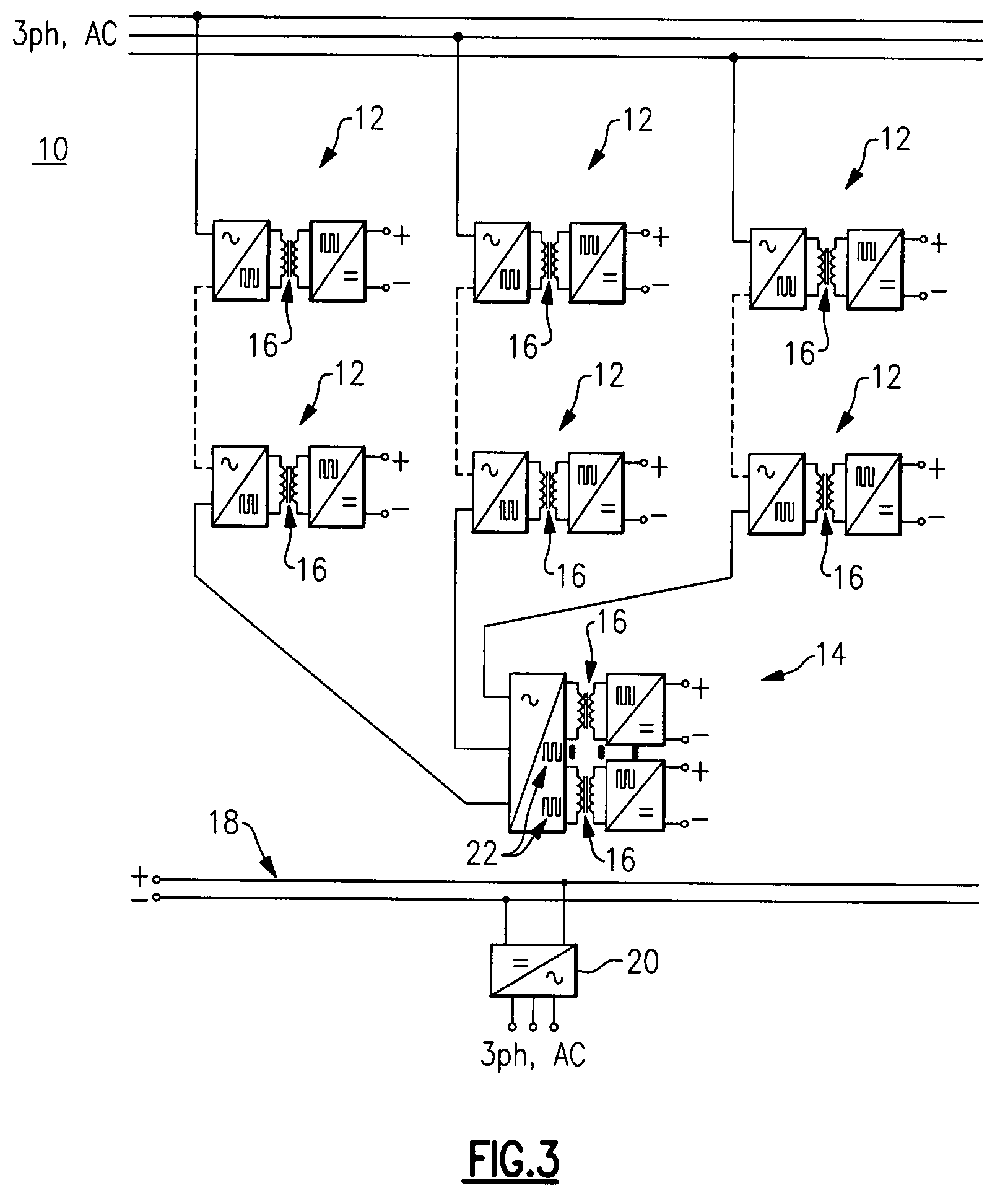Power conversion system with galvanically isolated high frequency link
a power conversion system and high frequency link technology, applied in the field of high frequency power electronics, can solve the problems of diluted power density of advanced turbines and generators, low power density of conventional electrical systems, and a large weight and volume of transformers,
- Summary
- Abstract
- Description
- Claims
- Application Information
AI Technical Summary
Problems solved by technology
Method used
Image
Examples
Embodiment Construction
[0026]FIG. 3 illustrates a power conversion system (e.g. solid-state power substation (SSPS)) 10 with galvanically isolated high frequency links according to one embodiment of the present invention. The power conversion system 10 in one embodiment employs a hybrid (a mixed three-phase and single phase topology coupled with mixed SiC and Si devices) AC-DC stage that includes a plurality of single-phase AC-DC converters 12, and a three-phase AC-DC converter 14, to provide an advanced replacement for a conventional iron core transformer. A more detailed diagram of power conversion system 10 is illustrated in FIG. 4. The power conversion system 10 is based upon 1) rectification of high voltage AC to high voltage DC links by using an Si SCR or diode bridge 30 combined with SiC MOSFET H-bridges 17; 2) modular SiC MOSFET H-bridge DC-DC converters (enumerated 15 in FIG. 4) inverting the high voltage DC links to high frequency AC links prior to rectification; 3) modular high frequency transf...
PUM
 Login to View More
Login to View More Abstract
Description
Claims
Application Information
 Login to View More
Login to View More - R&D
- Intellectual Property
- Life Sciences
- Materials
- Tech Scout
- Unparalleled Data Quality
- Higher Quality Content
- 60% Fewer Hallucinations
Browse by: Latest US Patents, China's latest patents, Technical Efficacy Thesaurus, Application Domain, Technology Topic, Popular Technical Reports.
© 2025 PatSnap. All rights reserved.Legal|Privacy policy|Modern Slavery Act Transparency Statement|Sitemap|About US| Contact US: help@patsnap.com



